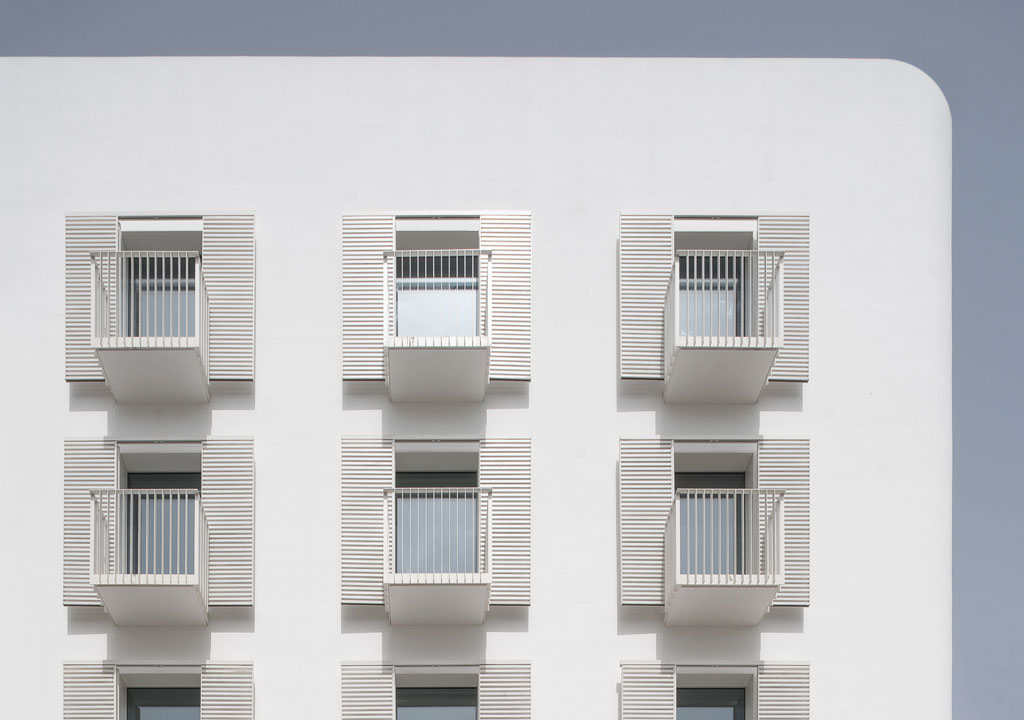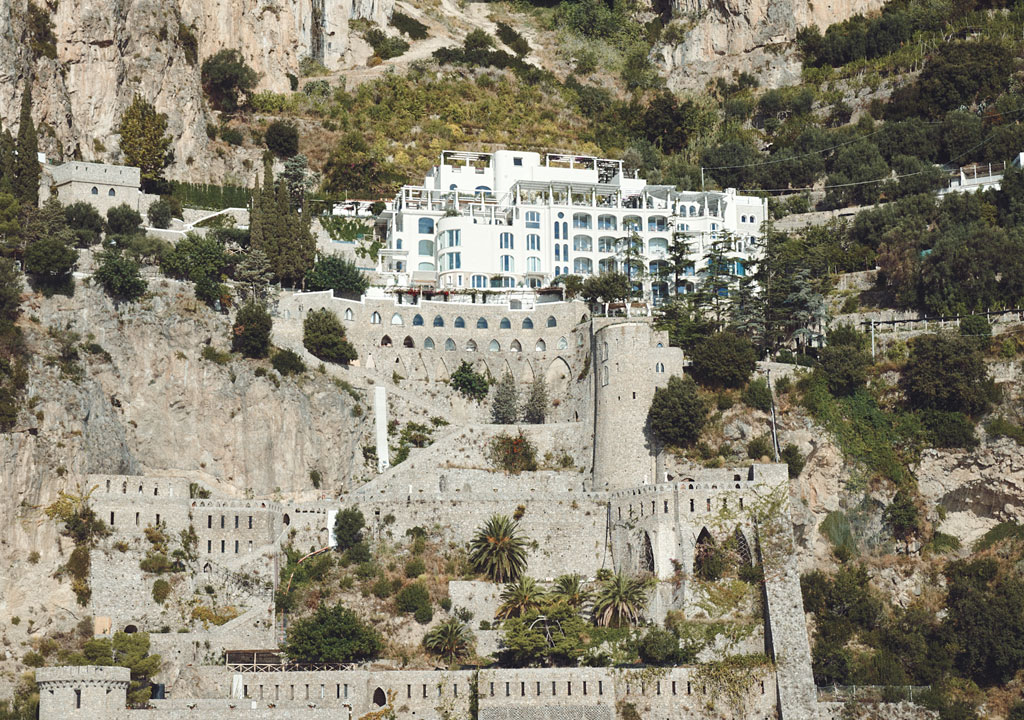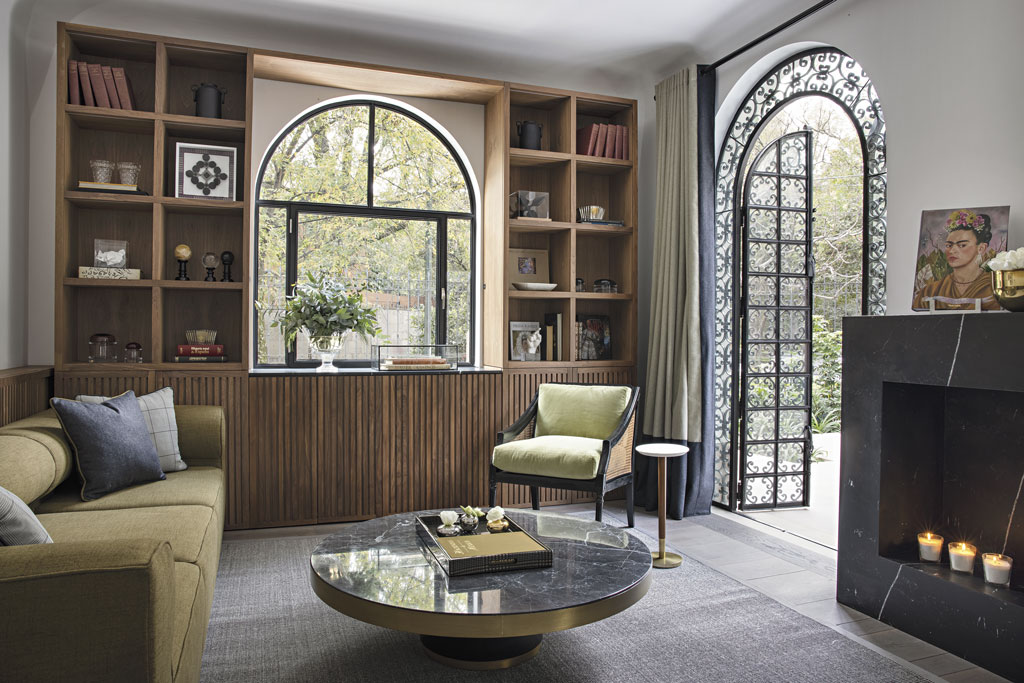Travel
5 High-Design Hotels for Your Next European Getaway
 The Madrid EDITION (Photo by Nikolas Koening)
The Madrid EDITION (Photo by Nikolas Koening) A combination of the loosening of European travel restrictions with rapidly rising domestic airfares and the strength of the dollar has many travelers considering making up for lost time with a trip to Europe this summer. While we largely stayed at home these past two years, innovative hotel options have opened overseas and are changing Europe’s lodging options for the better. Here are our favorites — five new properties with dramatic and thought-provoking design.
The Madrid EDITION
The appeal of the Madrid EDITION (from $437 per night), which just opened in April, lies in its juxtaposition of styles. British architect John Pawson, who prefers simple and elegant lines, and spirited and artistic French interior designer François Champsaur collaborated on the project. The building on Plaza de la Descalzas is clean-lined and modern, but adorned with a decorative 18th-century baroque portal that was salvaged from an adjacent building. Guests will surely notice that the shape of the headboards in the guest rooms were inspired by the elaborate piece but they’re paired with sleek furniture and a minimalist off-white color scheme. The hotel’s heart, the lobby on the upper ground floor, is accessed via a grand white spiral staircase that contrasts with the dark oak wood–lined space. Bold lobby furnishings include a sculptural sofa with backlit shelves, rope-covered chairs by Christian Astuguevieille and a pool table made from a single slab of white Bianco Neve marble.
Through the portal, visitors access the restaurant Jerónimo, spearheaded by Pujol chef Enrique Olvera. It has four eye-pleasing dining areas, including an oak-paneled dining room with bright yellow leather chairs and banquettes and celestial-inspired light fixtures, and a lounge with a long green marble bar and simple white oak floors. On the fourth-floor rooftop, Peruvian chef Diego Muñoz’s Oroya is a garden in the sky. Guests can enjoy a lazy lunch of tapas and ceviche and a pisco sour beneath a vine-covered pergola while looking at the 16th-century monastery below.
NoMad London
New York–based interior design firm Roman and Williams’ design for the NoMad London (from $499 per night), located in bustling Covent Garden, embodies the team’s elegant theatricality and successfully translates the NoMad brand’s sophisticated yet casual New York style across the pond. The founders of the firm, Robin Standefer and Stephen Alesch, embraced the concept known as “New Romanticism” for this project. As such, the masculine structure — the hotel is in a 19th-century building formerly known as The Bow Street Magistrates’ Court and Police Station — contrasts with the softer feminine interiors. The hotel feels like an art collector’s grand residence, with rich textiles, intricate woodwork and an eclectic art collection including everything from ethereal murals painted in collaboration with scenic painters from the Royal Opera House to abstract art.
Artistic and cultural references to London and New York can be found throughout. The irreverent pub, Side Hustle, serves British and American spirits alongside Mexican cuisine. The Library has red velvet furniture and books and artwork from both cities. The hotel’s true showstopper, the main restaurant, is in a three-story atrium — the former police station courtyard site — and modeled after an Edwardian greenhouse. Under the watchful eye of executive chef Ashley Abodeely, the restaurant is serving several signature NoMad dishes, including carrot tartare and Roast Chicken for Two stuffed with foie gras, black truffle and brioche. Comfort food indeed now that the New York NoMad is no more.
Madame Rêve
It took nine years of work for Paris’s Madame Rêve (from $555 per night), the dream of entrepreneur Laurent Taïeb, to come to fruition. The hotel in the 19th-century Poste du Louvre building, France’s most emblematic post office, stands out in a city known for exquisite hotels. The ground-floor cafe is modeled after the grand cafes of Vienna and draws on the opulent style of the Second Empire, with 26-foot-high ceilings, statement chandeliers and restored Louis Majorelle armchairs. The upper floors, including the massive green rooftop with a terrace and bar, are retro but not dated and feature walnut paneling and bronze mosaics. The hotel also has an 800-piece art collection that nods to post offices of the past and present.
The work of fine French artisans has been featured at every turn, from glassmaker Emile Gallé to French typographer Jacques Villeglé, who created the large fresco in the entrance hall off of rue Étienne Marcel. Taïeb designed the golden-brown furnishings, and the 82 rooms and suites have oak parquet floors, glazed Moroccan tiles and honey-colored curtains. The design of the panoramic contemporary Japanese restaurant, La Plume, is equally considered, with a wooden patio featuring 100 different trees and shrubs and a U-shaped marble bar the color of champagne.

Standard Ibiza
During the 1960s, hippies started flocking to the island paradise of Ibiza off the southern coast of Spain. The island’s quiet sandy coves and pine tree–covered hillsides were a haven from Spain’s dictatorship and the Vietnam War draft. The new Standard Ibiza (from $268 per night), the brand’s second European location, takes its cues from this era and the island’s bohemian spirit. The stark white hotel in a former movie theater a short walk from the marina complements the sun-bleached buildings of Ibiza’s Old Town. The hotel’s 67 rooms and suites, including a private residence Casa Privada, are understated and beachy with furnishings made from natural materials and light wood, freestanding bathtubs and potted plants. The hotel was conceived by Spanish creator Lázaro Rosa-Violán, and interiors were designed by The Standard Ibiza’s inhouse team, who layered different patterns, textures and colors to achieve the bohemian 1960s vibe.
Guest rooms with Juliet balconies and shutter-lined windows let in plenty of Spanish sun. Public spaces like the rooftop bar and pool UP and Jara, the ground floor restaurant that spills out onto Ibiza’s main plaza, Vara de Rey, have a showier style with retro-style shapes and furniture upholstered in bright green and tropical leaf–printed fabrics.
The Standard also boasts murals by artist Nicolás Villamizar inspired by music, dance and island life’s fluidity. Ibiza is famous for its nightlife and many European nightclubs set up shop there in the summer. The adults-only Standard is the type of place where tropical poolside cocktails can easily turn into a nightcap under the stars while listening to a DJ set.
Borgo Santandrea
Midcentury modern design meets the Mediterranean at this stunning year-old hotel that drips down an Amalfi Coast cliffside. The owners of Borgo Santandrea (from $2,104), two prominent Italian hospitality families, pays tribute to the building’s 1960 origins. Interiors and gardens showcase Italian craftsmanship with bespoke work by leading Italian design brands and artisans, like railings produced by a local blacksmith and Sicilian lava stone dining tables by Pecchioli Firenze in the hotel’s restaurant, La Libreria.
The property also pays homage to Italian architect and designer Gio Ponti, whose geometric blue-and-white tiles decorate the lobby: the floors of the hotel are adorned with more than 31 different types of hand-painted tiles that allude to modern design and the classical styles found at Pompeii and Herculaneum. Furniture lovers will be dazzled by the hotel’s collection of custom-built, re-editions and vintage pieces like a concierge desk by Carlo Mollino and a Hans Wegner Wishbone chair. Each of the 29 guest rooms and 16 suites offers floor-to-ceiling windows that allow uninterrupted views of the Tyrrhenian Sea and the ancient fisherman’s hamlet Conca dei Marini. Guests are also treated to vintage Italian textiles and one-off pieces in their rooms.
The landscape designer and gardener created garden terraces bursting with native plants like lemon and pomegranate trees, winter jasmine and myrtle shrubs. Guests meander through the gardens to reach the hotel’s private pebble beach, a rarity on the rocky coastline.










